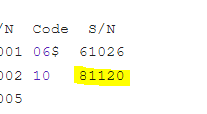You are using an out of date browser. It may not display this or other websites correctly.
You should upgrade or use an alternative browser.
You should upgrade or use an alternative browser.
J-20 5th Generation Fighter VII
- Thread starter siegecrossbow
- Start date
- Status
- Not open for further replies.
I think these spherical things in the background are J-20's training simulators. Would love to have an inside view.

Probably 360 degree projection to give an almost perfect simulation of what is seen inside a J-20 cockpit.
Pilot from Anshan who recently switched to J-20 with WS-10 engines claims that there has been an appreciable improvement in handling and maneuverability (compared with J-11B). The flight control system is also excellent and allows the pilot more time to think and make decisions in the air.
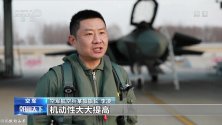
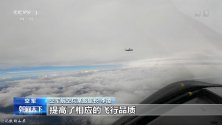
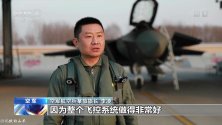
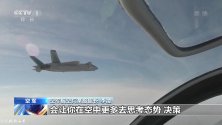




Last edited:
Allows the pilot?Pilot from Anshan who recently switched to J-20 with WS-10 engines claims that there has been an appreciable improvement in handling and maneuverability (compared with J-11B). The flight control system is also excellent and allows the pilot
View attachment 81403
View attachment 81404
View attachment 81405
View attachment 81406
Allows the pilot?
My text got cut off.
I suspect a more complex TVC nozzle would not be shorter than a standard nozzle, and it would have no effect on the length of the afterburner before it. So WS-10 with TVC won’t be noticeably shorter than a standard WS-10. In any case, if the WS-10 with TVC nozzle was shorter than one with a normal nozzle, that would have been obvious on the J-10 testbed for the TVC nozzle.
So my hunch is the fact that one engine ends further forward then the other implies the shorter engine has a shorter core or shorter afterburner. The Chinese have no known trouble with afterburner technology and if the afterburner for the WS-10 could have been made shorter, the Chinese would have made it shorter to start with. This suggest the shorter engine has a shorter core. A substantially shorter engine with the same or greater output suggest fewer fan, compressor or turbine stages and better blade technology. Such a drastic configuration difference strongly suggest it is a new engine, ie WS-15.
So If the photo showing a shorter engine on the J20 isn’t a piece of fanboy photoshop work, then my money I’d it shows a genuine WS-15 engine on that J20.
I would think so as well. Simply because a TVC WS-10 being incorporated onto J-20 for actual eventual service use (as opposed to testing TVC on J-20 for flight controls and that sort of purpose) doesn't make any sense at all.
The WS-10C that are powering J-20A can be considered powerful enough to give the J-20 equal if not superior thrust to weight compared to 4th gen fighters (considering J-20 pilot interviews and what the PLAAF itself is okay with revealing). Given and hinted reasons are new manufacturing methods and technologies have been able to reduce the weight of 5th gens, along with new materials for both the stealth RAM and metamaterials reducing the need for densely packing previous generations of stealth materials from those eras. Metamaterials contributing somewhat to a great deal in reducing this weight. While 5th gens are comparatively heavier, J-20 also has far more lift out of the body and far less drag compared to legacy 4th gen fighters which are already considered as violently maneuverable as humans can handle with G-suit assistance already.
Since those two basically balance out and we assume a half way between supposed weight and likely weight, then we can conclude that a AL-31 or WS-10C powered J-20 is not "underpowered" by any measure. They are considered less than ideal though, I suspect due to military thrust and supercruising. While J-20 is said to be able to supercruise with just AL-31 and WS-10 powering it, the overall parameters and speed of that supercruise is unknown and WS-15 with considerably higher military thrust could only improve that capability by potentially significant margins. Hence the less than ideal part.
Overall since AL-31 and WS-10 are the most ideal for 4th gens and carry those fighters to the most extreme edge, these same engines for J-20 should deliver no less (except for supercruise) since even if we assume 5th gens are mm^3 for mm^3 heavier and denser, this is still offset by their much improved lift and lowered drag. WS-10C and engines like 117 are approaching F119 levels of wet thrust already and not too far behind in military thrust. The F-22 is a wild performer and apparently the king of supercruisers.
The premise of TVC for J-20 has long been on allowing canards to have minimal deflection for certain turns, in order to maximise stealth. I suppose it's also good for both BVR and dogfights but TVC adds a lot more weight, complexity, maintenance time, expense, and slight losses in thrust.
A WS-10 TVC for J-20 service would turn a less than ideal powerplant situation (but capable enough) into one where it is more expensive, more maintenance costly, more time consuming, more heavy, and all with a bit less thrust. I wouldn't think some marginal stealthiness in certain limited situations would be worth that.
No, if J-20 is getting TVC, it is WS-15.
Last edited:
So I guess the J-20 is more maneuverable than a flanker?
It is more maneuverable than a J-11B. As per Yankee Su-35 is still the maneuverable fighter in service in PLAAF.
- Status
- Not open for further replies.

